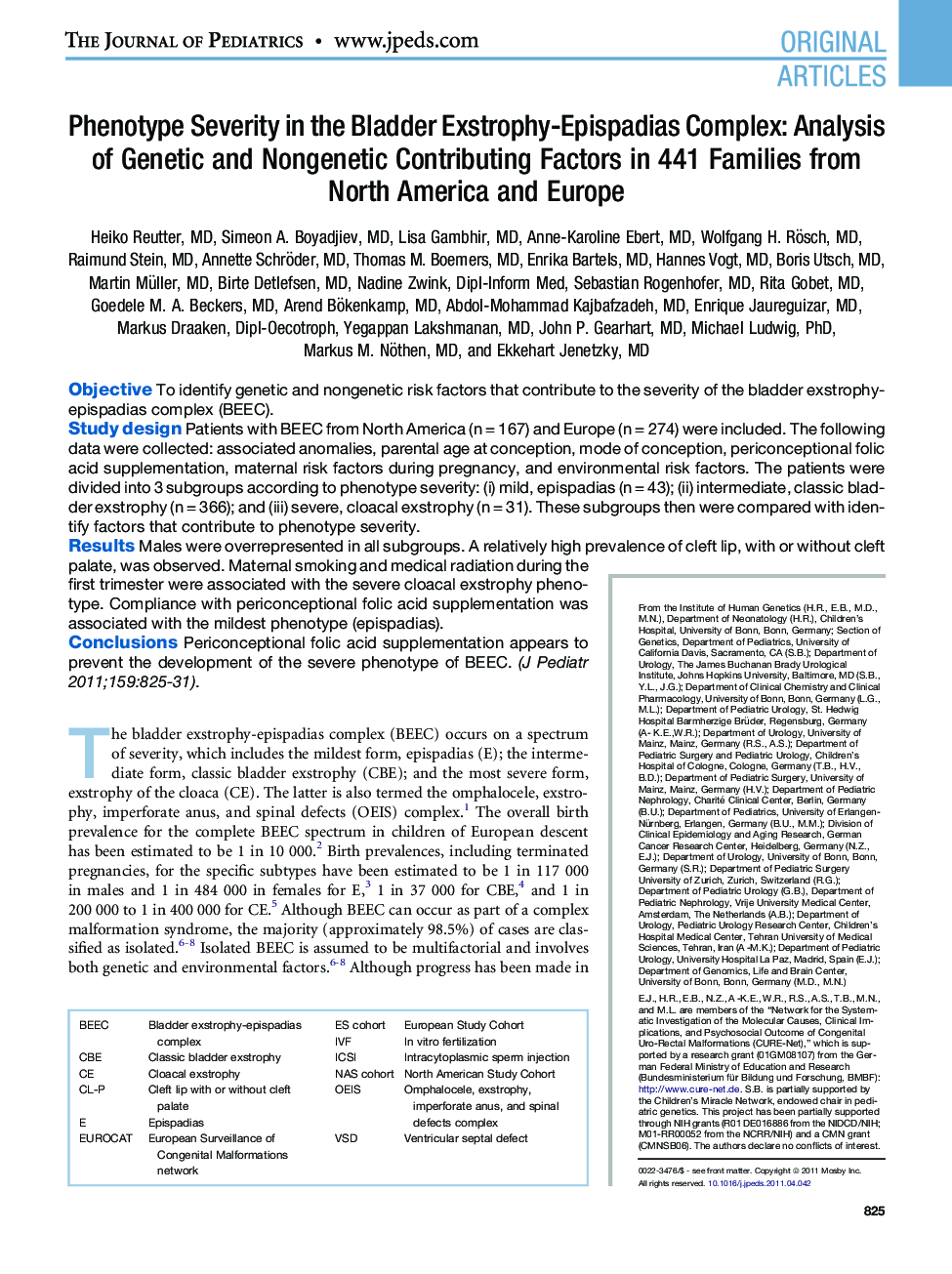| Article ID | Journal | Published Year | Pages | File Type |
|---|---|---|---|---|
| 6225009 | The Journal of Pediatrics | 2011 | 8 Pages |
ObjectiveTo identify genetic and nongenetic risk factors that contribute to the severity of the bladder exstrophy-epispadias complex (BEEC).Study designPatients with BEEC from North America (n = 167) and Europe (n = 274) were included. The following data were collected: associated anomalies, parental age at conception, mode of conception, periconceptional folic acid supplementation, maternal risk factors during pregnancy, and environmental risk factors. The patients were divided into 3 subgroups according to phenotype severity: (i) mild, epispadias (n = 43); (ii) intermediate, classic bladder exstrophy (n = 366); and (iii) severe, cloacal exstrophy (n = 31). These subgroups then were compared with identify factors that contribute to phenotype severity.ResultsMales were overrepresented in all subgroups. A relatively high prevalence of cleft lip, with or without cleft palate, was observed. Maternal smoking and medical radiation during the first trimester were associated with the severe cloacal exstrophy phenotype. Compliance with periconceptional folic acid supplementation was associated with the mildest phenotype (epispadias).ConclusionsPericonceptional folic acid supplementation appears to prevent the development of the severe phenotype of BEEC.
